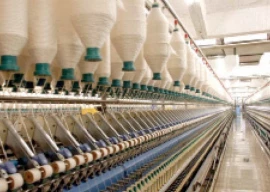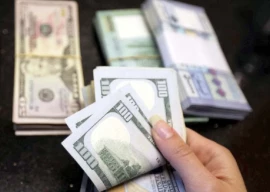
The new three-year strategic trade policy framework is in the final stages of preparation. Unfortunately, so far there has been no public debate either on television or in print media and it is not clear as to what direction it may take.
Some scanty reports emerged after the new policy was presented to the Cabinet Sub-committee on Exports on August 28. It seems that the new policy would be following the same general approach as was adopted in 2009 and 2012. It is, therefore, very likely that it will meet the same fate as the earlier ones.
Pakistan’s Vision 2025 envisages an ambitious export target of $150 billion per year. But since yearly exports have been stagnant at around $25 billion for the last three years and there has been no significant change in trade and tariff policies, it is difficult to imagine how they could just jump six-fold.

Before finalising the next three-year framework, a critical review of the previous ones needs to be conducted to identify the factors responsible for failure to achieve their targets and to find out what needs to be done differently this time.
Read: Irked business community says it was not consulted
Many other countries’ trade performance was poor, but they were able to change their policies and as a result their exports increased rapidly. In just one generation, countries such as Korea, China, Turkey, Singapore and Chile have joined the ranks of successful nations through changing their policies according to new global requirements and have substantially increased their trade share.
In 1995, exports from Pakistan and Vietnam were equal at $5 billion. Twenty years later, Vietnam’s exports have jumped to $150 billion whereas Pakistan has just crawled to $24 billion. It was bold reforms in Vietnam versus slow reforms in Pakistan that made the difference.
According to the Planning Commission’s Vision 2025, “over the last decade, Pakistan’s per capita income has grown at less than 3% per year, while other countries, eg, Bangladesh, China, India, South Korea and Sri Lanka, are growing at rates between 6% and 9%. If these trends continue, by 2047, the centenary year of the birth of Pakistan, the average incomes of these countries would be between 4 and 8 times higher.”
What leads to poor performance?
For any neutral outside observer, the main reason for Pakistan’s poor performance is obvious: Pakistan is much less integrated with the rest of the world. It has higher tariff walls compared to other developing countries and it hardly has any regional trade. In other words, it is making no effort to become part of the globalised world.
Recently, when World Bank Managing Director Sri Mulyani Indrawati visited Pakistan, her message was that we need to deepen economic reforms and integrate Pakistan’s economy with others.
Trade liberalisation
We are still stuck with import substitution policies, which others had abandoned in the 1970s and 1980s. Our auto policy is one such example. The PML-N government had been moving towards trade liberalisation in the past but was not able to make much progress because of short tenures.
However, this time when it could have made a difference, it is not taking that path. With every passing year, the level of tariffs has been rising. In the 2013-14 budget, tariff rates were raised on a large number of items.
A number of goods were subjected to regulatory duties. Even those goods that had been traditionally free of taxes for social reasons have been subjected to duty.
Taxes on international trade amount to 40% of total taxes, as compared to 2.5% for Vietnam, a ratio that is amongst the highest in the world.
As a result of high tariffs and other taxes on international trade, there is rampant smuggling. Anti-export bias has been gradually increasing.
Lack of coordination
While theoretically the Ministry of Commerce coordinates the trade policy formulation, in practice policymaking seems to be so dispersed that there is no overall coordinated policy. Customs tariff has become the main trade policy instrument and the Ministry of Commerce has no role in determining tariff rates.
Read: Cabinet approves three-year trade framework

Since the commerce ministry has no control over any of the trade policy instruments, its main emphasis has been to get preferential market access from other countries. For years its major objective was to get GSP Plus concessions from the EU and similar preferential access from other countries.
Such schemes are no substitute for domestic reforms and are generally meant for least developed countries that do not have the capacity to undertake reforms. In fact, even for those countries such schemes have not worked well as they shift resources to some specific industries at the expense of others.
The second major emphasis of the government has been to sign free trade agreements without due diligence and without undertaking any follow-up reforms. As a result, Pakistan’s agreements have only resulted in trade diversion and no trade creation.
Our inability to carry out any tariff reforms after implementing the free trade agreements means that we are providing huge tariff concessions to our trading partners without getting anything in return. In other words, we are subsidising their exports to Pakistan.
To sum up, Pakistan needs a paradigm change in its trade policy. It is in its interest to become part of the global supply chain. It needs to promote regional trade and become a transit hub as several other countries have done.
The writer served as Pakistan’s ambassador to WTO from 2002-08
Published in The Express Tribune, August 31st, 2015.
Like Business on Facebook, follow @TribuneBiz on Twitter to stay informed and join in the conversation.

1721122052-0/stranger-things-(1)1721122052-0-165x106.webp)





1730892765-0/Express-Tribune--(11)1730892765-0-270x192.webp)









COMMENTS (3)
Comments are moderated and generally will be posted if they are on-topic and not abusive.
For more information, please see our Comments FAQ